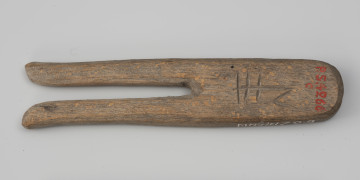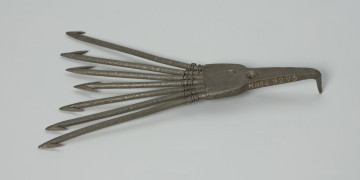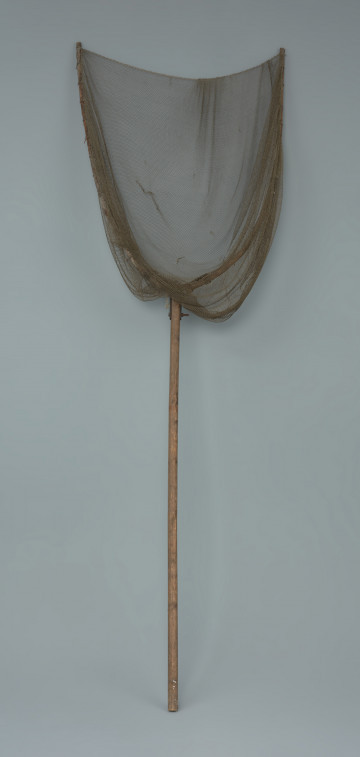
Buckle with ownership mark
1890 — 1950
National Museum in Szczecin
Part of the collection: Traditional fishing
Thrusting implements are among the oldest and most widespread fishing tools. In the 19th and early 20th centuries in Pomerania, the most popular of these were multi-pronged spears, known here as ościenie. They were considered more useful than single-prong spears because of their greater effectiveness in catching smaller fish. The multi-pronged pears varied in design, making method, size and shape. These differences resulted from several factors, such as the size of fish being caught, the habitat of specific species and also the traditions passed down from generation to generation. In the collection of the Department of Ethnography of Pomerania of the National Museum in Szczecin, there are thirty-two multi-pronged spears. Most of them are tulip-shaped or rectangular, one of them resembles a candelabra. Its axis is a prong with a triangular head, around which smaller prongs are placed, nine in total. The candelabra-shapes spear was made at the turn of the 19th and 20th centuries in Western Pomerania. It is one of the relics taken over by the Museum of Western Pomerania (now the National Museum in Szczecin), from the Regional Museum in Białogard when it was closed down in 1951.
Agnieszka Słowińska
Author / creator
Dimensions
cały obiekt: height: 34,5 cm, width: 15 cm
Object type
point tool
Creation time / dating
Creation / finding place
Identification number
Location / status

1890 — 1950
National Museum in Szczecin

National Museum in Szczecin

1. połowa XX wieku
National Museum in Szczecin
DISCOVER this TOPIC
National Museum in Szczecin
DISCOVER this PATH
Educational path